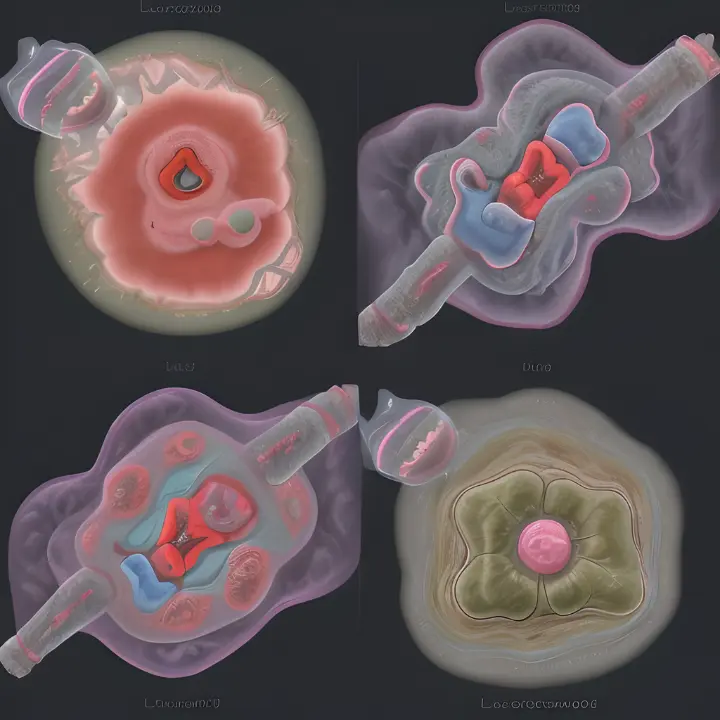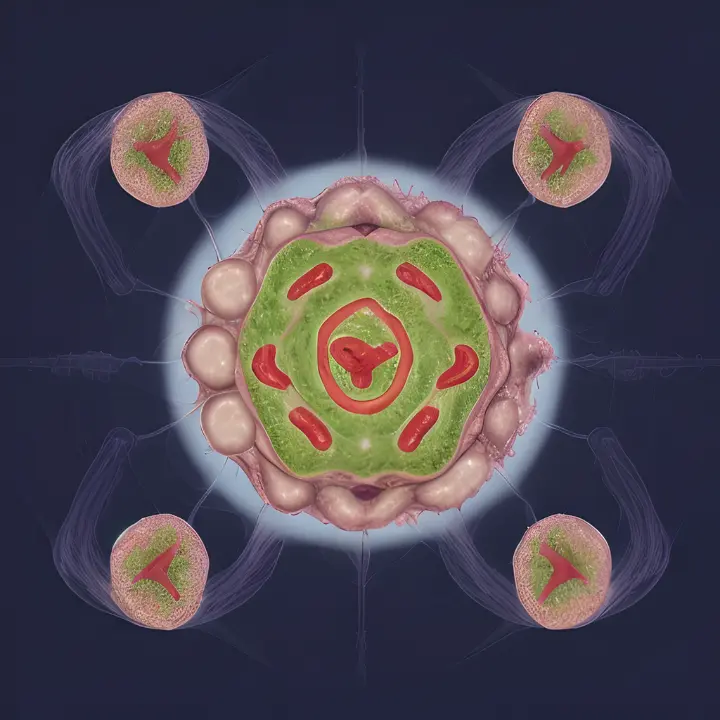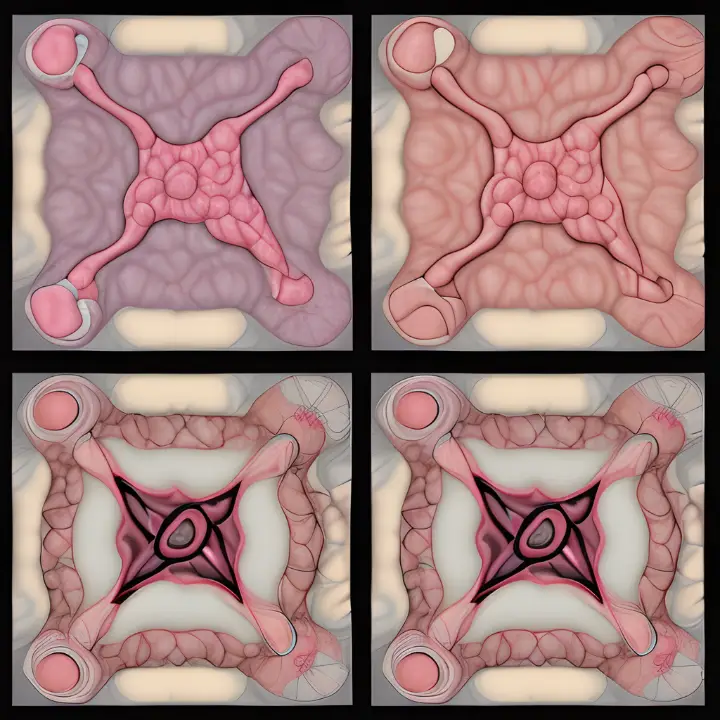What is Mucosa-Associated Lymphoid Tissue Lymphoma

Mucosa-associated lymphoid tissue lymphoma is a unique type of non-Hodgkin lymphoma that grows slowly and often stays localized. It develops in tissues outside the lymph nodes, particularly in areas like the stomach, lungs, or thyroid. Chronic infections, such as Helicobacter pylori in the stomach, frequently contribute to its development. Autoimmune conditions like Sjögren’s disease and Hashimoto’s thyroiditis also increase your risk. Unlike other lymphomas, this type often remains confined to its original site, making early detection crucial for effective treatment.
Key Takeaways
Mucosa-associated lymphoid tissue lymphoma is a slow-growing cancer. It often stays in one area. Finding it early helps with treatment.
Symptoms include belly pain, long-lasting cough, and weight loss. See a doctor if you notice these problems.
Long-term infections, like Helicobacter pylori, raise the risk of this cancer. Autoimmune diseases can also increase the chance. Regular check-ups are important.
Treatment depends on where and how advanced the cancer is. Doctors may use antibiotics, radiation, or immunotherapy to treat it.
Watch your symptoms and visit your doctor often. Early care makes a big difference in getting better.
Symptoms of Mucosa-Associated Lymphoid Tissue Lymphoma

Stomach Symptoms
Abdominal pain or discomfort
You might experience abdominal pain or discomfort if mucosa-associated lymphoid tissue lymphoma affects your stomach. This pain often feels like a dull ache or cramping in the upper abdomen.
Nausea, vomiting, or indigestion
Nausea and vomiting are common symptoms. Indigestion, described as a burning sensation or bloating after meals, may also occur. These symptoms can mimic other gastrointestinal issues, so they are easy to overlook.
Unexplained weight loss
Unexplained weight loss is another sign. You may notice a drop in weight without changes to your diet or activity level. This symptom often accompanies a loss of appetite or persistent bloating.
Note: Stomach-related symptoms like indigestion, nausea, and weight loss are frequently reported in MALT lymphoma cases. If you notice these signs, consult a healthcare provider for evaluation.
Lung Symptoms
Persistent cough
A persistent cough that doesn’t improve over time could indicate mucosa-associated lymphoid tissue lymphoma in the lungs. This cough may feel dry or produce mucus.
Shortness of breath
You might find it harder to breathe, especially during physical activity. This symptom can worsen as the disease progresses.
Chest discomfort
Chest discomfort, including a feeling of tightness or mild pain, may also occur. These symptoms can resemble those of respiratory infections, making diagnosis challenging.
Salivary Gland Symptoms
Swelling in the salivary glands
Swelling in the salivary glands, particularly in front of the ears or under the jaw, is a noticeable symptom. This swelling may feel tender or firm to the touch.
Dry mouth or difficulty swallowing
You might experience a dry mouth, making it harder to swallow or speak. This symptom often results from reduced saliva production due to gland involvement.
Tip: Symptoms vary depending on the affected organ. For example, stomach involvement often causes indigestion, while lung involvement leads to respiratory issues.
Other Symptoms
Fatigue or weakness
You may feel unusually tired or weak if you have mucosa-associated lymphoid tissue lymphoma. This fatigue often persists even after rest. It can interfere with daily activities, making it harder to concentrate or stay active. Weakness may also result from the body’s effort to fight the disease or from nutritional deficiencies caused by related symptoms like poor appetite.
Enlarged lymph nodes
Swollen lymph nodes are another common symptom. You might notice lumps under your skin, especially in areas like your neck, armpits, or groin. These lumps usually feel firm and may or may not be tender. While enlarged lymph nodes can occur with many conditions, their presence alongside other symptoms could indicate mucosa-associated lymphoid tissue lymphoma.
Symptoms specific to other affected sites (e.g., thyroid, skin)
This type of lymphoma can affect various organs, leading to site-specific symptoms. For example, if it involves the thyroid, you might experience swelling in the neck or difficulty swallowing. Skin involvement could cause rashes, lumps, or lesions. Each site presents unique challenges, so paying attention to unusual changes in your body is essential.
Tip: Keep track of persistent or unexplained symptoms. Early detection improves treatment outcomes for mucosa-associated lymphoid tissue lymphoma.
Causes and Risk Factors of Mucosa-Associated Lymphoid Tissue Lymphoma
Chronic Infections
Helicobacter pylori infection in the stomach
Chronic infections play a significant role in the development of mucosa-associated lymphoid tissue lymphoma. One of the most common infections linked to this condition is caused by Helicobacter pylori. This bacterium infects the stomach lining, leading to persistent inflammation. Over time, the immune response to this infection promotes the growth of B cells, which can result in gastric MALT lymphoma.
Persistent H. pylori infection triggers inflammation and lymphocyte infiltration, stimulating B cell proliferation.
Chronic gastritis caused by H. pylori produces molecules like IL-8, which activate neutrophils and damage the gastric mucosa.
Treating H. pylori infection can lead to lymphoma regression in 60–90% of patients.
Other bacterial or viral infections
Other infections also contribute to MALT lymphoma. For example, Borrelia burgdorferi is associated with skin MALT lymphoma, while infections linked to Sjögren’s syndrome often affect the salivary glands. The table below highlights some common infections and their associated lymphoma types:
Infection | Associated MALT Lymphoma Type |
|---|---|
Helicobacter pylori | Gastric MALT lymphoma |
Borrelia burgdorferi | Skin MALT lymphoma |
Sjögren’s syndrome | Salivary gland MALT lymphoma |
Autoimmune Conditions
Sjögren’s syndrome
Autoimmune conditions like Sjögren’s syndrome increase your risk of developing MALT lymphoma. This condition causes chronic inflammation in the salivary glands, which can lead to abnormal lymphocyte activity and lymphoma formation.
Hashimoto’s thyroiditis
Hashimoto’s thyroiditis, another autoimmune disorder, affects the thyroid gland. Chronic inflammation from this condition can result in thyroid MALT lymphoma. If you have either of these autoimmune diseases, regular monitoring is essential.
Other Risk Factors
Age and gender (more common in older adults)
MALT lymphoma occurs more frequently in older adults, particularly those over 60. It also appears slightly more often in women than in men.
Family history of lymphoma
A family history of lymphoma increases your risk. If close relatives have had lymphoma, you may have a higher likelihood of developing this condition.
Environmental or occupational exposures
Exposure to certain chemicals or toxins in the environment or workplace may also contribute to the development of MALT lymphoma. These exposures can weaken your immune system, making it more susceptible to chronic infections or abnormal cell growth.
Diagnosis of Mucosa-Associated Lymphoid Tissue Lymphoma
Medical History and Physical Examination
Review of symptoms and risk factors
Your doctor will begin by reviewing your symptoms and medical history. They will ask about any persistent issues, such as abdominal pain, fatigue, or unexplained weight loss. If you have a history of chronic infections or autoimmune conditions, this information will help guide the diagnostic process.
Physical exam to check for swollen lymph nodes or other abnormalities
During the physical exam, your doctor will check for swollen lymph nodes in areas like your neck, armpits, or groin. They may also examine specific organs, depending on your symptoms. For example, they might check for swelling in the salivary glands or thyroid if these areas are affected.
Diagnostic Tests
Endoscopy and biopsy for stomach involvement
If your symptoms suggest stomach involvement, your doctor may recommend an endoscopy. This procedure uses a thin, flexible tube with a camera to examine your stomach lining. During the endoscopy, a small tissue sample (biopsy) will be taken. Examining this sample under a microscope is essential for confirming the presence of cancer cells in mucosa-associated lymphoid tissue lymphoma.
Imaging tests (e.g., CT scans, PET scans)
Imaging tests play a crucial role in diagnosing and staging the disease. Common imaging methods include:
Computed Tomography (CT): Helps detect and stage the lymphoma.
Magnetic Resonance Imaging (MRI): Useful for detailed imaging of affected areas.
Positron Emission Tomography (PET): Sometimes used for treatment planning.
Effectiveness in MALT Lymphoma Detection | |
|---|---|
Barium Contrast Studies | Not helpful for visualizing normal MALT |
Computed Tomography (CT) | Useful in diagnosing and staging MALTomas |
Magnetic Resonance Imaging (MRI) | Useful in diagnosing and staging MALTomas |
Positron-Emission Tomography (PET) | May be useful for diagnosis and treatment planning |
Blood tests to assess overall health and detect abnormalities
Blood tests provide valuable insights into your overall health. These tests may include:
A complete blood count to measure blood cell levels.
Tests for bacterial or viral infections.
Kidney and liver function tests to evaluate organ health.
Pathology and Genetic Testing
Examination of biopsy samples under a microscope
Pathologists examine biopsy samples to confirm the diagnosis. They look for specific cancer cells and patterns that indicate mucosa-associated lymphoid tissue lymphoma. This step is vital for determining the type and extent of the disease.
Testing for genetic mutations or markers
Advancements in genetic testing have improved the ability to detect genetic errors associated with this lymphoma. These tests identify molecular changes and markers that help guide treatment decisions. Understanding the genetic makeup of the disease allows for more personalized care.
Treatment Options for Mucosa-Associated Lymphoid Tissue Lymphoma

Antibiotic Therapy
Eradication of Helicobacter pylori infection in gastric MALT lymphoma
If you have gastric mucosa-associated lymphoid tissue lymphoma caused by Helicobacter pylori, antibiotic therapy is often the first line of treatment. This approach targets the bacterial infection, which can reduce inflammation and stop the growth of lymphoma cells. Studies show that antibiotic therapy has a success rate of 60% to 80% in treating this type of lymphoma. Your doctor may prescribe a combination of antibiotics along with acid-reducing medications to improve the effectiveness of the treatment.
Tip: Early detection of H. pylori infection can significantly improve treatment outcomes for gastric MALT lymphoma.
Radiation Therapy
Targeted radiation for localized disease
Radiation therapy is a common option for localized mucosa-associated lymphoid tissue lymphoma. It uses high-energy rays to destroy cancer cells in a specific area. This treatment is especially effective when the lymphoma has not spread beyond its original site. While radiation therapy is generally well-tolerated, you may experience side effects. Short-term effects, such as fatigue or skin irritation, usually resolve quickly. However, long-term effects can include lung damage, thyroid issues, or an increased risk of secondary cancers in the treated area. Managing these side effects involves regular follow-ups and supportive care.
Note: If you are a smoker, quitting can reduce the risk of secondary cancers after radiation therapy.
Chemotherapy and Immunotherapy
Use of drugs like rituximab for more advanced cases
For advanced or recurrent cases of mucosa-associated lymphoid tissue lymphoma, systemic treatments like chemotherapy and immunotherapy are often recommended. Rituximab, a monoclonal antibody, is a widely used immunotherapy drug. It works by targeting specific proteins on lymphoma cells, helping your immune system destroy them. Chemotherapy regimens, such as CHOP (cyclophosphamide, doxorubicin, vincristine, and prednisone), are also effective. Additionally, targeted therapies like BTK inhibitors (e.g., ibrutinib) and immunotherapy drugs like lenalidomide offer promising results for recurrent cases.
Drug Name | Type | Description |
|---|---|---|
Cyclophosphamide | Chemotherapy | Commonly used in CHOP regimen |
Doxorubicin | Chemotherapy | Known as Adriamycin, part of CHOP regimen |
Rituximab | Immunotherapy | Monoclonal antibody used in chemoimmunotherapy |
Ibrutinib | Targeted therapy | BTK inhibitor for recurrent MALT lymphoma |
Lenalidomide | Immunotherapy | Used for recurrent MALT lymphoma |
Tip: Discuss the potential side effects of these treatments with your healthcare provider to ensure you are prepared for the journey ahead.
Surgery
Rarely used but may be an option for certain localized cases
Surgery is not a common treatment for mucosa-associated lymphoid tissue lymphoma. However, it may be considered in specific situations. For example, if the lymphoma is confined to a small, easily accessible area, surgical removal might be an option. This approach is more likely when other treatments, such as antibiotics or radiation, are not effective.
In rare cases, surgery can help relieve symptoms caused by complications. For instance, if the lymphoma causes a blockage in the stomach or intestines, removing the affected tissue can restore normal function. Your doctor will evaluate the risks and benefits of surgery based on your overall health and the location of the lymphoma.
Note: Surgery is typically reserved for cases where other treatments are not viable. Discuss all available options with your healthcare provider to make an informed decision.
Monitoring and Follow-Up
Watchful waiting for slow-growing cases
Mucosa-associated lymphoid tissue lymphoma often grows slowly. In some cases, immediate treatment may not be necessary. Instead, your doctor might recommend a "watchful waiting" approach. This involves closely monitoring your condition without starting active treatment.
During this period, you will undergo regular check-ups to track any changes in your symptoms or the progression of the disease. Watchful waiting can help you avoid unnecessary treatments and their potential side effects.
Regular check-ups to monitor disease progression
Regular follow-ups are essential for managing mucosa-associated lymphoid tissue lymphoma. These appointments allow your doctor to assess your response to treatment or detect any signs of recurrence. Common follow-up procedures include:
Physical exams to check for swollen lymph nodes or other abnormalities.
Imaging tests, such as CT or PET scans, to monitor the affected areas.
Blood tests to evaluate your overall health and detect any changes.
Tip: Keep a record of your symptoms and share them with your doctor during follow-ups. This information can help guide your treatment plan.
Mucosa-associated lymphoid tissue lymphoma is a rare but treatable condition. Early detection plays a vital role in improving outcomes, as symptoms often vary based on the affected site. Diagnostic tools like biopsies and imaging tests help confirm the disease. Prognosis is generally favorable, with nearly 90% of patients surviving five years or more. However, factors like advanced stage or age over 70 can affect survival. Treatment options, including antibiotics, radiation, and immunotherapy, depend on the disease's stage and location. If you notice persistent symptoms or have risk factors, consult a healthcare provider promptly.
FAQ
1. What is the prognosis for MALT lymphoma?
The prognosis for MALT lymphoma is generally favorable. Most patients survive more than five years after diagnosis. Early detection and treatment improve outcomes. Advanced cases may require more aggressive therapies, but survival rates remain high.
2. Can MALT lymphoma spread to other organs?
Yes, MALT lymphoma can spread, though it often stays localized. If it spreads, it may involve lymph nodes or distant organs. Regular monitoring helps detect progression early.
3. Is MALT lymphoma hereditary?
MALT lymphoma is not typically hereditary. However, a family history of lymphoma may increase your risk. Discuss your family history with your doctor to understand your personal risk factors.
4. How can you reduce the risk of MALT lymphoma?
You can lower your risk by treating chronic infections like Helicobacter pylori and managing autoimmune conditions. Avoiding environmental toxins and maintaining a healthy lifestyle also helps.
5. What should you do if you suspect MALT lymphoma?
If you notice persistent symptoms like abdominal pain, fatigue, or swollen lymph nodes, consult a healthcare provider. Early diagnosis improves treatment outcomes. Keep track of your symptoms and share them during your appointment.
Tip: Regular check-ups and prompt medical attention are key to managing your health effectively.
---
ℹ️ Explore more: Read our Comprehensive Guide to All Known Cancer Types for symptoms, causes, and treatments.
See Also
Exploring Lymphoma Associated With AIDS: Key Insights
A Deep Dive Into Mycosis Fungoides: Skin Lymphoma
Cutaneous T-Cell Lymphoma: Symptoms And Key Information
Lymphoplasmacytic Lymphoma: Understanding Symptoms And Causes
